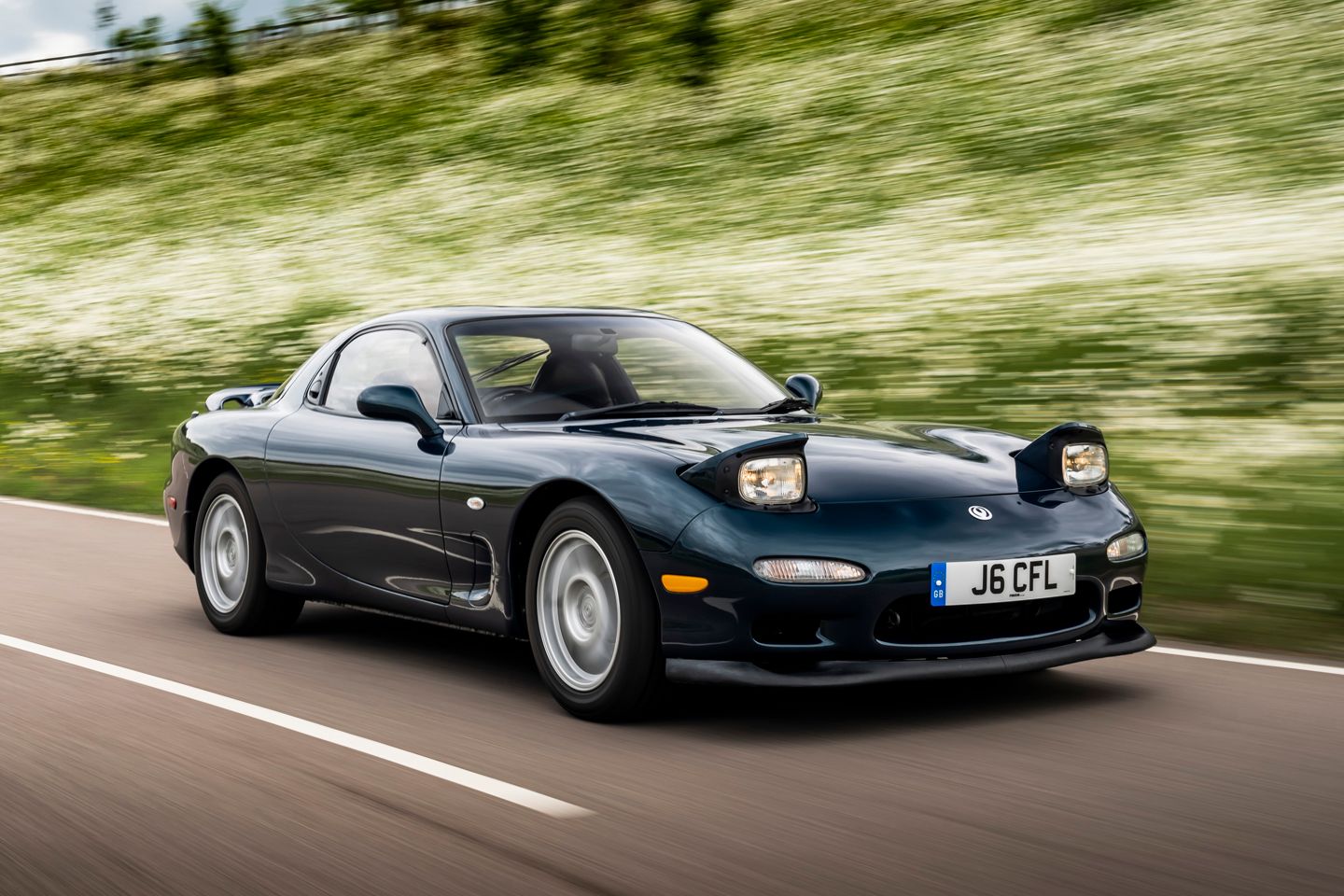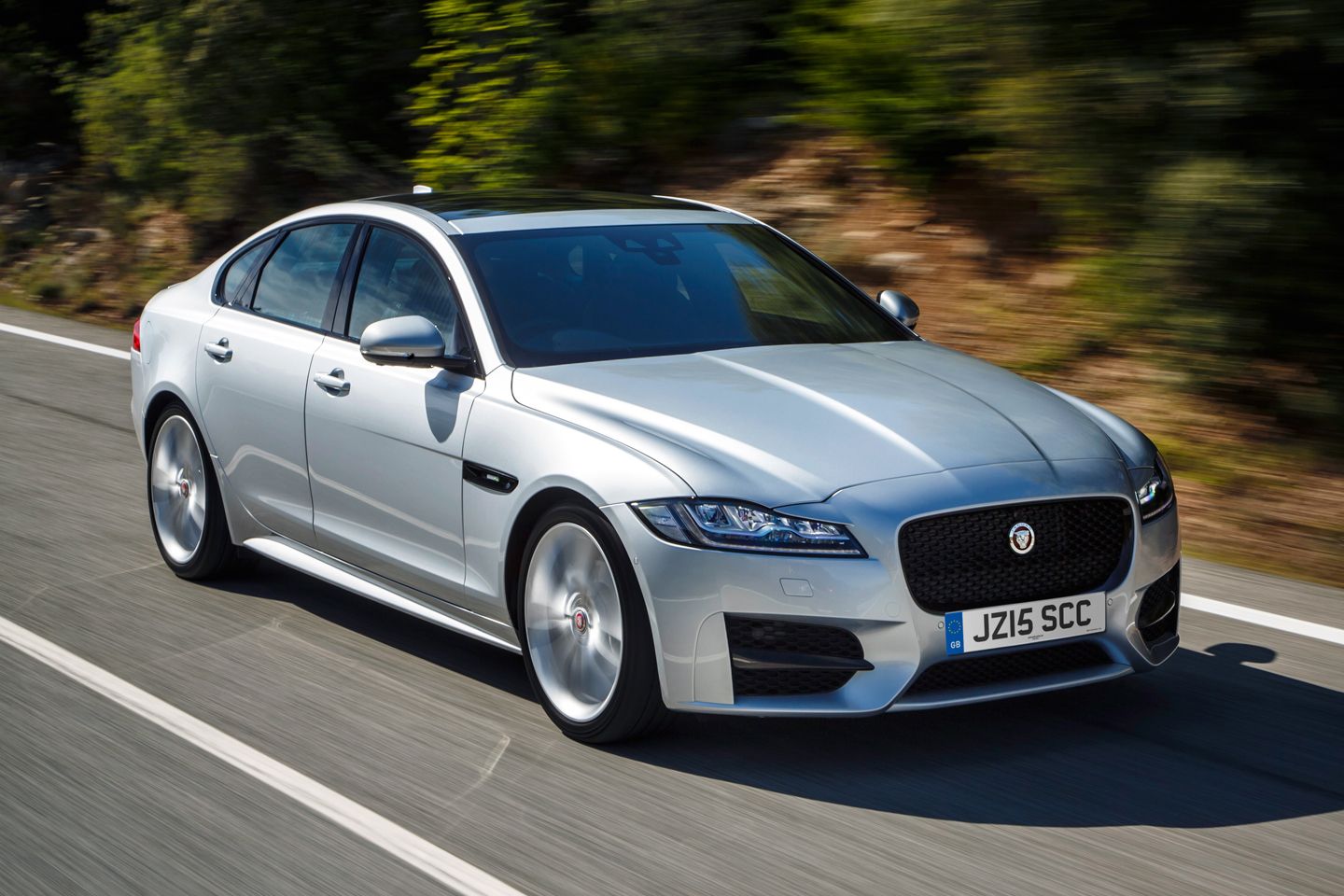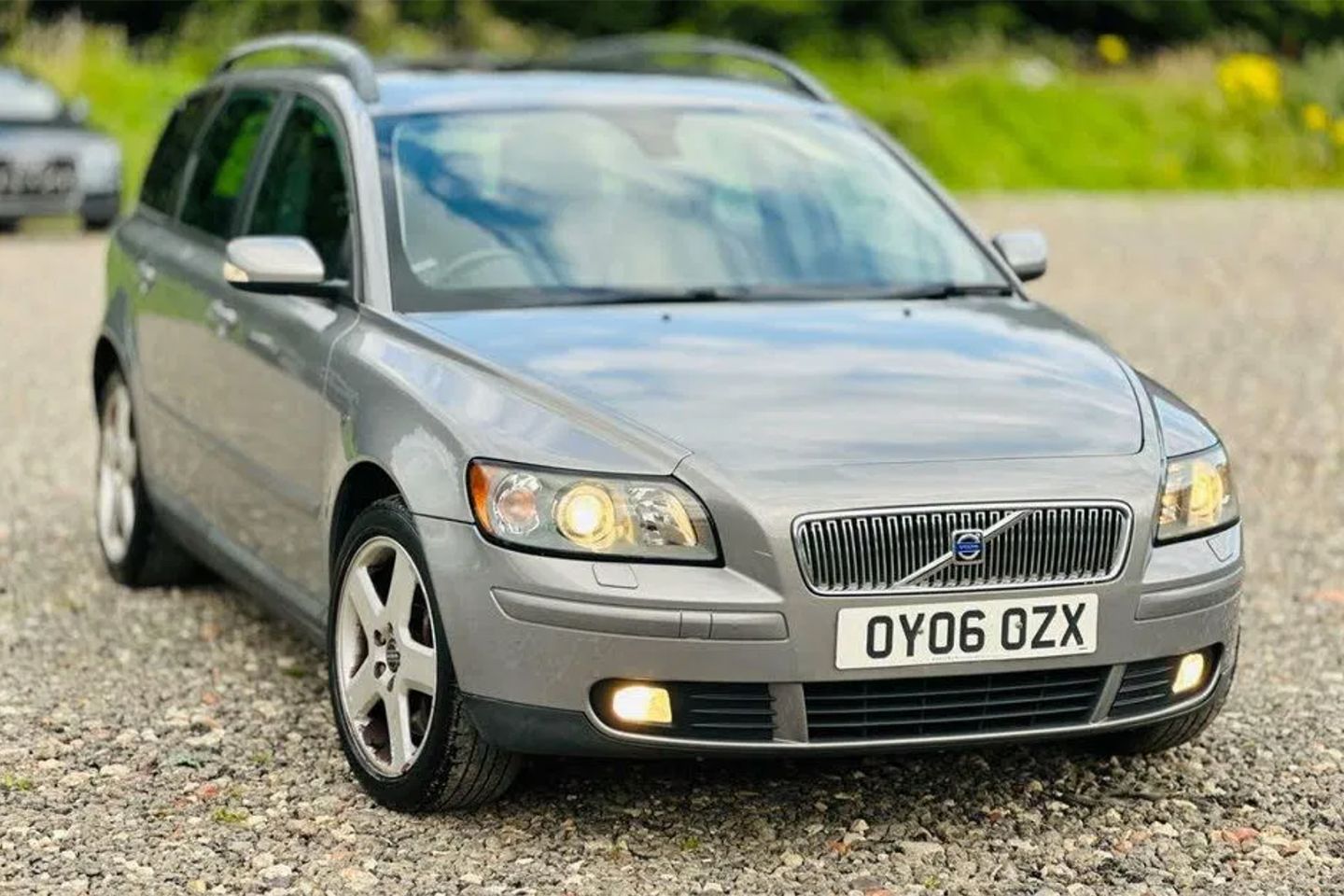
It’s hard not to admire Mazda’s persistence with rotary technology. Many experimented with Felix Wankel’s revolutionary combustion engine, only to drop it later on. Yet Mazda continues undeterred. Having apparently enjoyed one last hurrah with the RX-8, it now offers an MX-30 SUV with a rotary range extender (and suicide doors still, of course). It continues to exhibit gorgeous concepts without conventional piston power, and probably always will. In a world of relentless and mind-numbing conformity, Mazda’s insistence on doing things its own way is laudable.
Though Mada’s first rotary-powered car was launched as far back as the ’60s (bravo to those that knew it was the Cosmo) and the RX-8 went all the way to 2012 (sales of super unleaded never have recovered), it’s unarguably the third generation, FD RX-7 that remains the most famous exponent of the idea. Nowadays it ranks with the Skyline and NSX and Supra as one of the Japanese heroes of the ’90s, though it’s worth remembering how significant – and how well received – this was back in the day as well. The MX-5 turns 35 this year, yes, but the FD is only a couple of years behind…
Mazda had never enjoyed a period quite as momentous as the start of the ’90s before then, and probably not since. The world had gone barmy for the MX-5, then the 787B won Le Mans – the first time a Japanese maker had done so – then this car launched. All in the space of two and a half years from 1989 to 1991. It had dabbled in rallying and the first RX-7 was well-liked (the second not so much), but that 24 Hours victory and then this car really shot Mazda into the stratosphere.


Think for a moment about how sports coupes looked in the early ’90s. This arrived before the E36 M3, with Porsche still muddling along with transaxle four-cylinders and air-cooled flat sixes; Jaguar was years from replacing the XJS for heaven’s sake. Into that space Mazda launched a lightweight (so pared back extra strengthening had to go in at the last minute), sophisticated, beautiful sports coupe with a sequentially turbocharged rotary engine. It must have been like something from another universe. A better universe. The reviews were emphatic: it was better than a 968, said Car Magazine. It blew US testers away. The awards came flooding in, from Motor Trend’s Best Import Car to Car and Driver’s 10 Best list every year it was on sale. With Road & Track the FD lapped Streets of Willow 1.5 seconds faster than an NSX. It snuck ahead of a 911 Turbo, too.
All of which – the excitement around the Mazda brand, the dated rivals, the enormous performance – should have made the RX-7 a smash hit. It wasn’t – not even close. It may have evolved into an icon of the genre for many, but in the early ’90s the UK just didn’t take to the FD whatsoever. It launched at £32,535 in 1992 (admittedly a bad time for pricey, rare groove two-seaters) which was dropped to nearer £25k after slow initial sales. Even that didn’t work, and the RX-7 was withdrawn from the UK in 1995 after just 210 were delivered. Staggering, right?
Just as unbelievable is the fact that Mazda’s Montego Blue heritage fleet example survived all of the ’90s and a chunk of the ’00s in private ownership with the only upgrade being a rude exhaust (it’s back to stock since these pics were done). It’s covered fewer than 30,000 miles. Compact, unadorned and pretty yet also overflowing with presence, seeing an FD for the first time in yonks is a reminder of just how right Mazda got it. This is a contemporary of cars like the Nissan 300ZX, Mitsubishi 3000GT and – it should be said – the A80 Toyota Supra, all heavier, more complicated and physically larger takes on the two-door that didn’t look anywhere near as svelte more than 30 years ago. You don’t need us to tell you how the situation stands in 2024. It remains an absolute stunner.


The interior is a bit more early-’90s Japanese car, complete with an ocean of black plastic, an unnecessarily vast steering wheel (with limited adjustability) and seats more appropriate for a Xedos 9. But the chrome’s a nice touch, it’s just about possible to get comfy as a taller driver and that large central tacho – only starting to go red where many piston engines of the time would explode – really sets the tone.
Obviously we must talk about the 13B-REW first. With 240hp for UK cars and not a single modification to this one, the engine perhaps doesn’t dominate the experience like Tokyo Drift might have taught us it does. But it’s still such a joy to use, flat below 2,000rpm and ramping up really, really strongly from there. It’s possible to tell when the turbos switch over about 4,500rpm if you’re really paying attention, and from there it rips even harder. In deference to its age, 7,000rpm seems the place to change up, but curiosity wins out in the end; it’s only the change-up buzzer that chimes then, the thing spinning its little heart out past peak power to eight thousand with uncanny smoothness and that uniquely endearing, rasping sound. Even in standard form, like so many Japanese cars of the era – be they high revving or heavily turbo’d – the Mazda’s is a wonderfully engaging powertrain. Fast, too, definitely a match for those lardier rivals that pushed the 280hp gentleman’s agreement. And hot – get out after a run and the whole thing is scorching, like it’s only just enough car to contain all that energy.
Revs mean you’ll need gears, and the FD’s five-speed is predictably lovely; not quite as slick as an MX-5’s – longer in throw and a tad notchier – though still really accurate and weighted nicely. Also like an MX-5 is steering that’s never quite as communicative as you hoped for, though that captain’s wheel won’t be doing anything for tactility. What’s very much unlike the little roadster, however, is how taut and responsive the RX is, firm and focused rather than roly-poly fun.
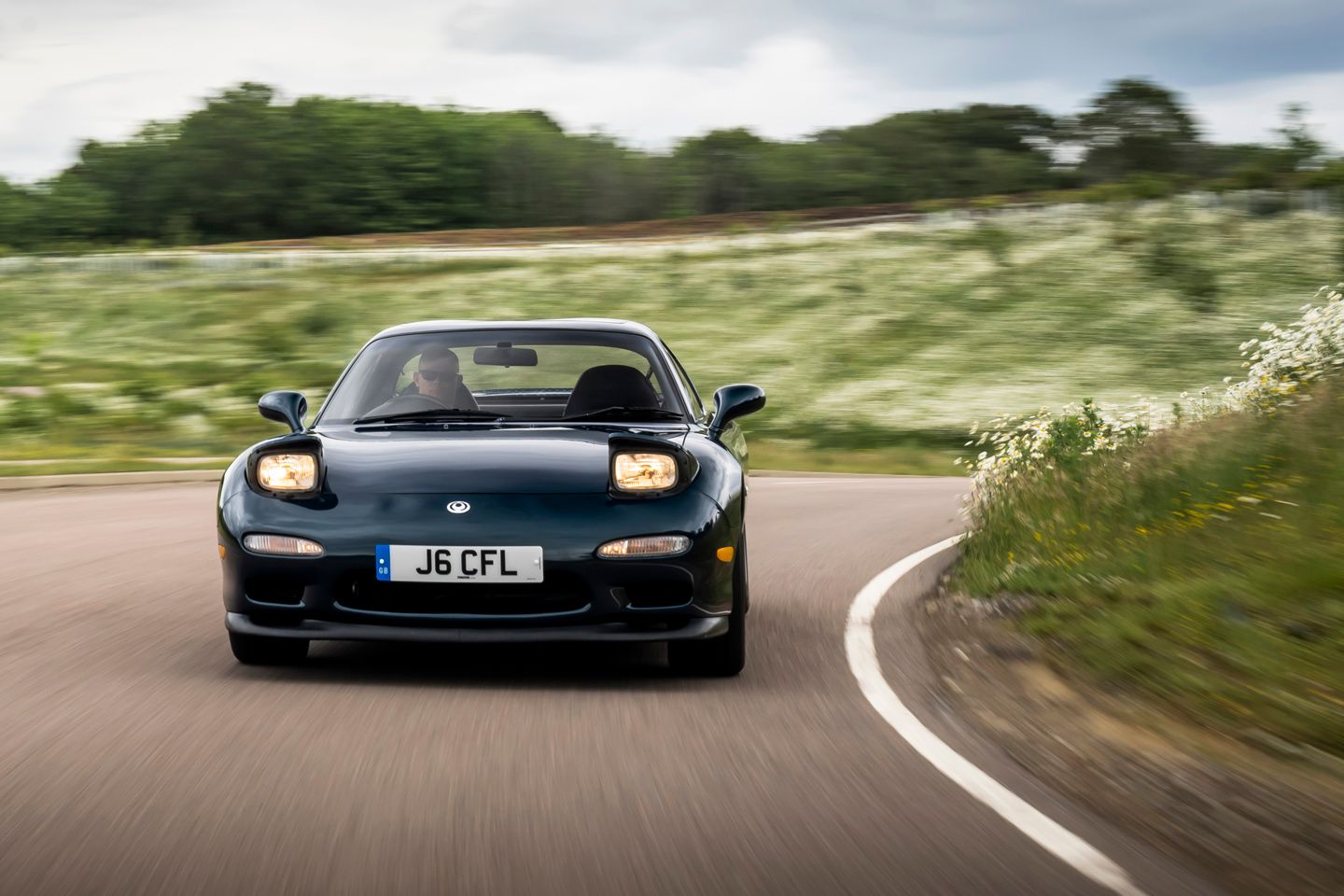

All UK cars received additional bracing and a stiffer setup than standard Japanese ones, and even now there’s relatively little slack and an immediacy not commonly associated with cars of this era. Busy, too, with no bump passing by without buzzing through the cabin and plenty of noise to accompany every mile – but sports cars should be about excitement and interaction. The RX-7 wasn’t one of those flabby tech fests; it was meant to be the raw, back-to-basics driving machine, and it remains abundantly entertaining.
Indeed, with the engine weighing so little, this feels almost front-mid-engined. There’s inherent agility and poise, with what seems like the friendliness of a conventionally front-engined car. And that feels fantastic. It should be noted that these have caught people out on the limit (or when turbos change over), so it’s certainly not without flaw, though at realistic road speeds now it’s a fantastic drive. It brings to mind the GR86 a little, actually, with just enough power to thrill, great control weightings and good visibility.
Closer to home (and interior aside), the RX-7 gives the impression that it could have followed 8, rather than the other way around – i.e. having experimented with wacky doors and even more revs and a bargain price in the care-free 90s, Mazda zoned in on a serious sports car with some extra torque and proper hardware. In so many aspects, this really defies its age. Small, poised, nimble and quick, an afternoon is absolute proof that the RX-7 doesn’t need a single turbo conversion, a Veilside kit or an A’Pexi exhaust to be memorable.
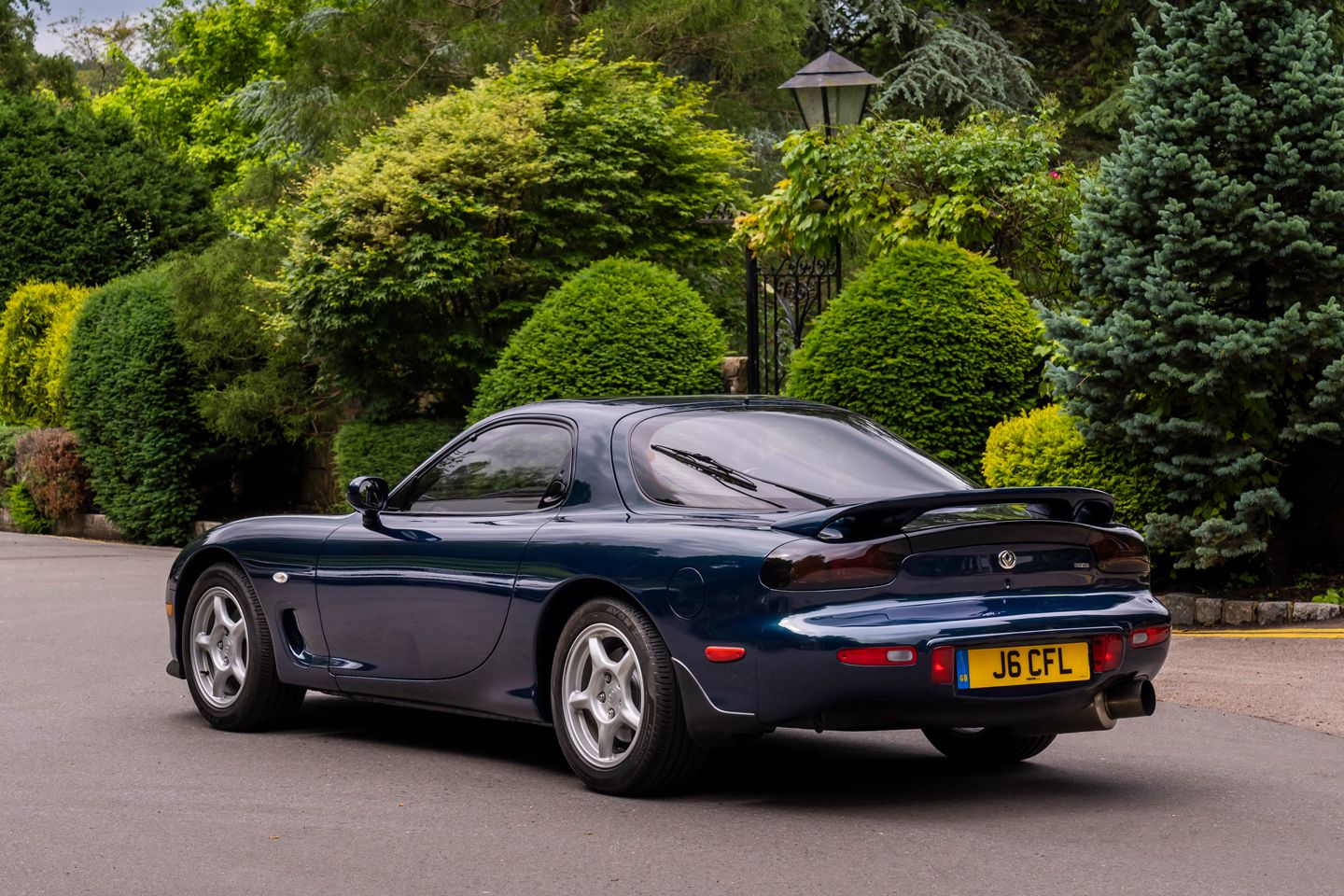

What an RX-7 does require, however, is a good deal of TLC. Easier to administer, arguably, now it’s a bonafide classic; rather less excusable when it was a much newer production model. It needs a lot of mineral oil, it needs a lot of fuel, and the engine rebuilds that are so commonplace with 8s must be trickier because of the turbochargers. Speaking of which, the sequential setup means dawdling is terrible for RX-7s; the second blower can be troublesome if it’s never in use. And don’t forget the compression test. And any hot or cold starting issues. A good rotary is still a thing of joy; a bad one might have you hankering for a four-cylinder Porsche.
Nevertheless, the world was in the ’90s and is today a better place for the RX-7. For all its flaws, the rotary unit is the perfect partner for a pure, engaging sports car; something in the style of a Supra just wouldn’t have suited so well. Like so many of the Japanese icons, the RX-7 demonstrates how successful doing things differently can be, and it continues to deserve praise for that. In the same way that a Skyline GT-R wouldn’t be the same without an RB26 or an NSX without a screaming V6, so the RX-7 would be a very different prospect – surely a worse one – without its idiosyncratic engine. While the future of rotary is still very much in the balance, examples like this ensure its past shines brighter than ever. Finding one will be difficult, undoubtedly, as well as expensive. Such is the problem with cars that find fame later in life. But those wondering should be in little doubt – RX-7’s Hero status is richly deserved.
SPECIFICATION | MAZDA RX-7
Engine: 1,308cc two-rotor rotary, twin-turbo
Transmission: 5-speed manual, rear-wheel drive
Power (hp): 240@6,500rpm
Torque (lb ft): 218@5,000rpm
0-62mph: 5.4 sec
Top speed: 156mph
On sale: 1992-1995
Price new: £32,535 (UK market price)
Price now: from £20,000
